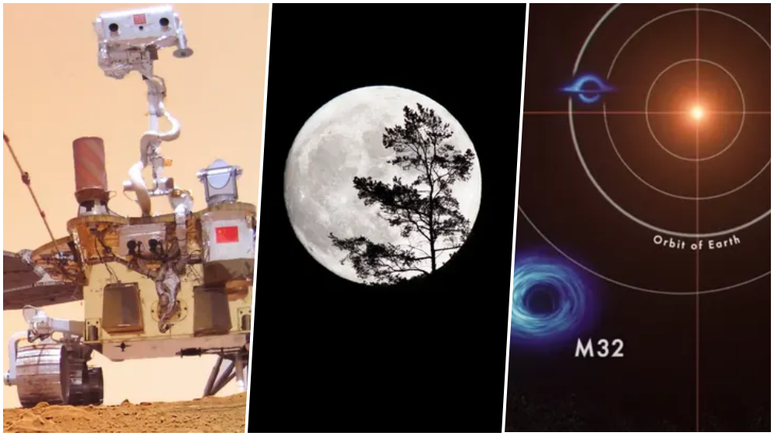Check out top space news from the week of April 29 to May 5, 2023, and stay up-to-date on everything that matters most in the universe of astronomy!
The week was illuminated by the Full Moon, which remained full for three days, including during Friday’s eclipse. It’s just that this eclipse was of the penumbral type, which is barely noticeable to the untrained eye. In addition to the eclipse, scientists were able to take pictures of lunar regions where sunlight never reaches.
Check out these and other astronomical news stories that stood out during the week.
Zhurong’s “sleep” on Mars
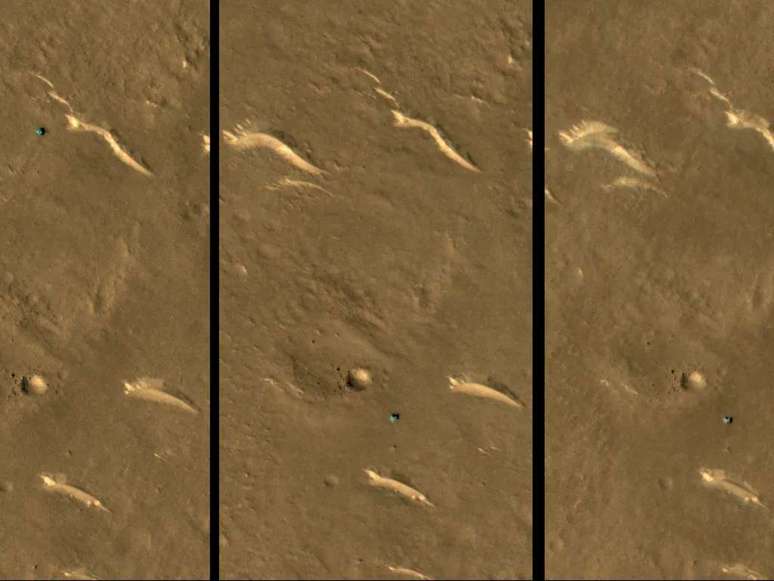
The Zhurong rover has been sitting in the same spot for nearly a year, after being put into sleep mode by a dust storm in May 2022. Now, the robot’s lead designer said it probably failed to generate enough power to resume its operations, not even to reconnect with the Chinese team.
It’s very likely that this happened because the dust storm covered part of the rover’s solar arrays, but that doesn’t mean that’s the end of the story. Even if the accumulation of dust is 30% greater than expected, Zhurong could still “wake up” when the seasons change on Mars.
The penumbral lunar eclipse on the full moon of Flores
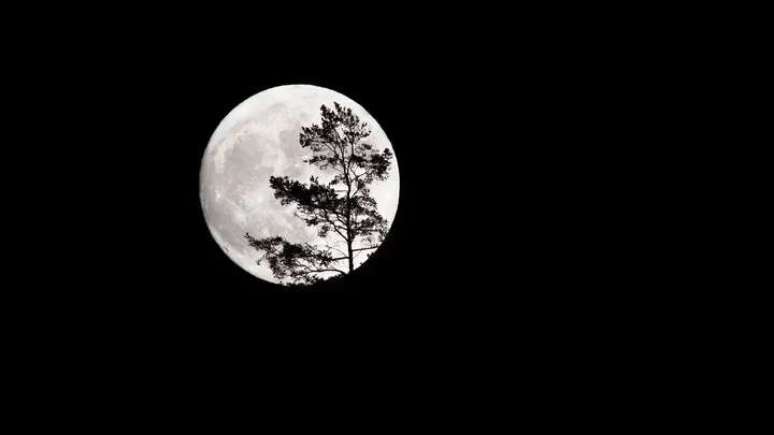
Friday (5), the inhabitants of Australia, Africa, the Pacific, Atlantic and Indian Oceans may observe a penumbral lunar eclipse, in which the Moon passes through the lightest shadow of the Earth. In this type of eclipse the lunar luminosity decreases, but the Moon is not reddened, as in total eclipses, nor darkened on one side, as in partial ones.
In addition to the eclipse, the occasion was also the Full Flower Moon, a name referring to the time when wildflowers and garden flowers are in bloom.
The size of supermassive black holes relative to the Sun
The video above was shared by NASA during the week and shows a comparison of sizes between the Sun and some supermassive black holes acquaintances. The first on the list is the smallest of them, practically the size of our star, but with 100 thousand times the solar mass.
Then, the examples of black holes continue to get bigger and more massive, eventually reaching the largest ever observed to date, TON 618, with its 60 billion solar masses. Each of them is at the center of a galaxy, including Sagittarius A*, from our Milky Way, which also appears in the video.
The first rocky exoplanet with water in the atmosphere
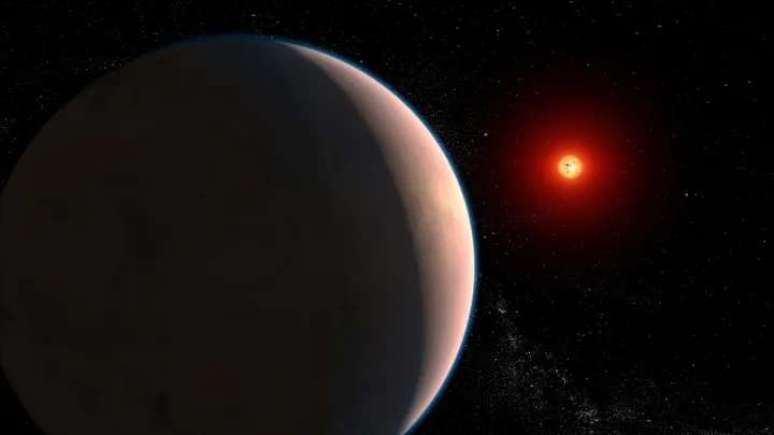
While astronomers have already found many terrestrial planets (made of rock, just like Earth), none it appears to have a water vapor atmosphere. Maybe that just changed: The spectrograph aboard the James Webb Telescope has detected signs of water on the planet orbiting the star GJ 486.
The problem is, you still can’t be sure if this water vapor is associated with the planet or star itself. GJ 486 is a red dwarf just 26 light-years from Earth; future studies will try to confirm whether it really has a similar atmosphere to ours.
The delay of the spaceship explosion
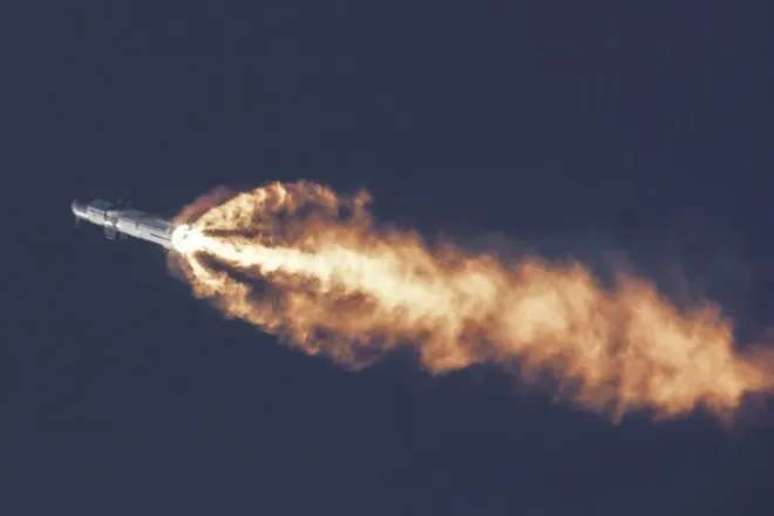
SpaceX’s Starship rocket had problems with the stage separation system, which led to the activation of the flight abort, the famous self-destruct. However, the vehicle longer than expected to explode.
According to information from Elon Musk himself, the termination command took 40 seconds to disintegrate the Starship, a delay that should be another crucial point for safe flights in future launches. Still, the SpaceX CEO said the test flight was a success, “maybe even slightly exceeded my expectations,” he added.
Photo of the eternal shadows at the south pole of the moon
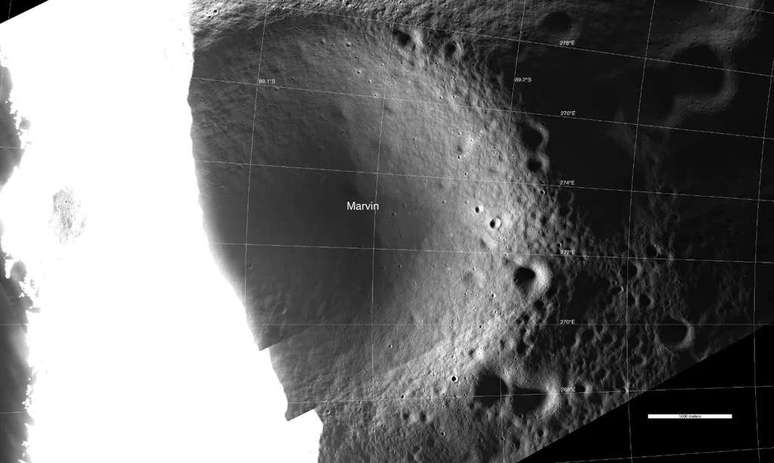
Although there is no “dark side of the moon”, some regions are always hidden from the sun’s rays. One is the South Pole, which is now being investigated by the Danuri spacecraft, South Korea’s first lunar mission. he has taken some fantastic ones from the region with its ShadowCam, a highly sensitive light camera.
The image above, for example, shows Marvin crater and its surroundings. The white band is illuminated directly by sunlight, which ended up helping a bit to photograph the interior of the areas that remain in the shade. Other regions also appeared, such as the crater Aristarchus, which can be photographed with the help of the glow reflected from the Earth.
The “Remnants” of the First Stars of the Universe
Perhaps the relentless search for the universe’s first stars is coming to an end. Astronomers have announced that they have found, for the first time, gas clouds this old of their own it could be what’s left of these stars after they explode in supernovae.
In total there are three clouds of gas, all with a chemical composition poor in elements heavier than hydrogen and helium. This is the main indication that these are indeed stars born more than 13 billion years ago. New studies will probably be done to prove it and also to find other similar clouds.
Trending on Canaltech:
- Why do hospitals give gelatin to patients?
- Motorola Edge 40 launches with big differentials and aggressive pricing
- Does Guardians of the Galaxy 3 have a post-credits scene?
- Marvel confirms the Hulk’s newfound power is here to stay in official canon
- The material violates the rules of physics and can lead to a revision of theories
- The penumbral lunar eclipse and flower moon occur this weekend
Source: Terra
Rose James is a Gossipify movie and series reviewer known for her in-depth analysis and unique perspective on the latest releases. With a background in film studies, she provides engaging and informative reviews, and keeps readers up to date with industry trends and emerging talents.

